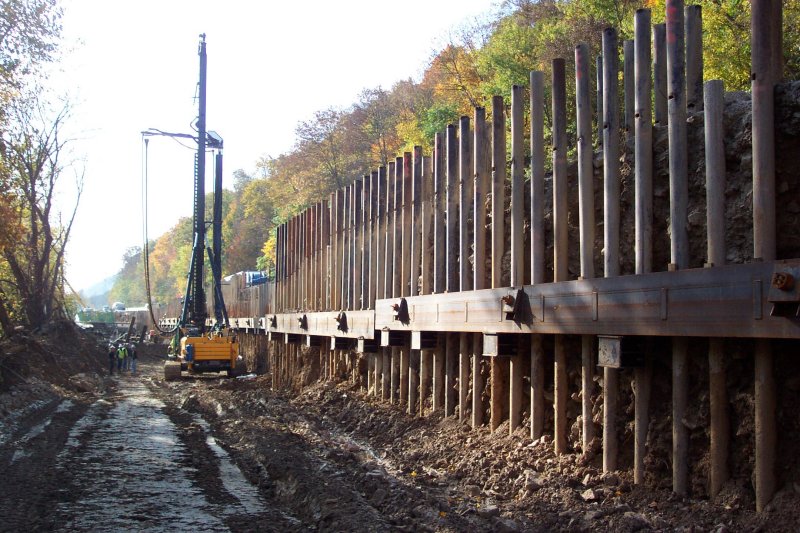Micropiles
Micropile can be made by boring or drilling holes in soil or rock, then micropile execution continue by inserting a reinforcing element adequate to the hole size. The micropiles are then grouted by backfilling the hole from the bottom, using cement mortar (grout). This type of micropile has a small bearing capacity, in accordance to micropile diameter, micropile length and the type of soil to which the micropile has to transfer the loads applied to the micropile itself.
Simultaneous drilling and grouting ensures that the grout is continuously placed over the full depth of the micropile, enabling grout to permeate the surrounding ground and increase skin friction. Rotary percussive installation ensures high rates of production and provides good directional stability if obstructions are encountered.


Main advantages of contiguous pile walls are:
Offer a practical and cost-effective solution to costly alternative pile systems as well as a solution to job sites with difficult access.
Easy Installation.
Compact, lightweight drilling and installation equipment makes micropiles ideal for remote or confined areas.
Drill small holes very close to existing walls.
oreholes can be drilled without damage to adjacent structures.
Quality
We are passionate about excellence and doing our work right the first time.
Experience
We actively build a diverse, inclusive, and collaborative work environment where all views are welcomed.
Reliablility
We are fully dedicated to delivering our objectives through the most efficient and reliable use of resources.
Relationships
We build positive, long-term relationships with our customers, joint-venture partners, subcontractors, suppliers, and colleagues that are built on trust, respect, and collaboration.
Team Work
We insist on mutual respect, cooperation and mutual encouragement to achieve each individual’s potential.
